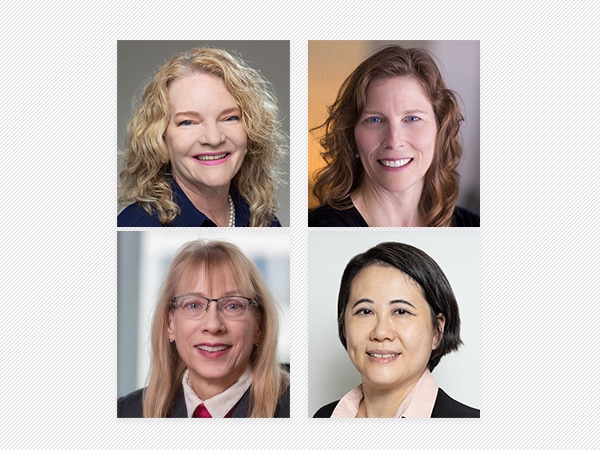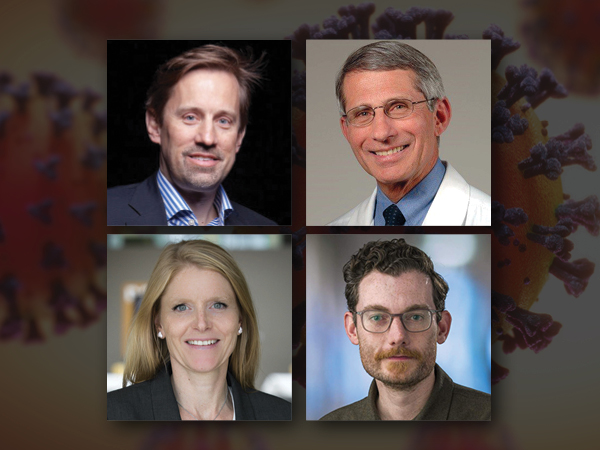Women Provide Leadership and Inspiration at the AACR
This year, the American Association for Cancer Research (AACR) will celebrate its 115th birthday. From the very beginning, women have played pivotal roles in our organization’s leadership.
The AACR elected its first female President, Thelma B. Dunn, MD, in 1961. To date, 14 women have served as President of the AACR, and this spring, President-Elect Lisa M. Coussens, PhD, will become the 15th when she is inducted President at the AACR Annual Meeting 2022.
The AACR and the broader cancer research community benefit tremendously from the experienced leadership of Margaret Foti, PhD, MD (hc), who has served as chief executive officer since 1982. She has guided the organization through exponential growth, with dramatic expansion in membership and an increased focus in critical areas of advocacy, such as cancer health disparities and federal funding for biomedical research.
Another key area of growth under Foti’s leadership has been the introduction of multiple high-impact journals, many of which have had female editors. Presently, four women serve as Editors-in-Chief: Elaine R. Mardis, PhD, FAACR, and Lillian Siu, MD, FRCPC, who lead the AACR’s newest journal, Cancer Research Communications; as well as Elizabeth A. Platz, ScD, MPH, Editor-in-Chief of Cancer Epidemiology, Biomarkers & Prevention; and Beverly A. Teicher, PhD, Editor-in-Chief of Molecular Cancer Therapeutics. To mark Women’s History Month, they graciously shared their thoughts on how to cultivate a strong pipeline of women in science.

Cancer Research Catalyst: What advice do you have for young girls who want to pursue STEM?
Mardis: I frequently encourage young girls who are interested in STEM to gain as much hands-on experience as they can, in order to familiarize themselves with the scientific method, the language of science, and its unique writing style. This experience can be through a local science center or online, through classes at school, and workshops that may be available to them. They can also gain exposure through reading about science and scientists, engineers, mathematicians, and through interacting with people in these professions when possible.
Platz: Be curious! Ask questions about how things work and how to measure what we can see and can’t see. Ask why things are as they are and whether and how they can be changed for the better. Find questions that interest you. Practice asking questions and testing hypotheses and enter your project in a science and engineering fair. Listen to podcasts about science and read the life stories and contributions of scientists, including cancer scientists.
Siu: As a woman and a visible minority who grew up in Canada, a country that embraces diversity, gender balance, and multiculturalism, I have appreciated the freedom to pursue my academic interest and my career path in subject matters that are most appealing to me, without limitations due to my gender, race, or ethnicity. One of the fondest memories from my high school days was my participation in an intercity mathematics competition. I was part of an all-girls team and we were so proud when we went home with the championship trophy!
For girls today, I would tell them the word impossible means “I-AM-Possible,” so be courageous, curious, and always rise to the challenge. Some venues to find out more about STEM include science fairs, open houses by various college and university programs, and summer camps and workshops, where you can meet many trainees and researchers in these fields.
Teicher: Go for it! Pursue the dream that your brain and your heart lead you too. Be prepared to work very hard for many years; 12-hour days in the lab should not be unusual. Remember that data are the currency of science. The more data that you generate, the richer your career will be. Be rigorously honest in your work and do not hesitate to think creatively.
Having a mentor who believes in you makes a big difference. I had two PhD mentors—one who believed in me and one who did not know what to make of me. When experiments hit a roadblock, I kept going to prove something to both of my mentors and to myself. Choose your mentor carefully.
Cancer Research Catalyst: What advice do you have for women who are early-career researchers?
Mardis: My advice to early-career researchers is to identify key mentors who can provide guidance, advice, and the voice of experience as they navigate early career obstacles. Typically, I encourage them to identify at least two mentors with complementary experience, just so they gain more than one expert perspective. As mentees, I encourage them to remind their mentors that sponsorship is an important component that contributes to early career success.
Platz: Take all reasonable research and related opportunities because these can produce unexpected new research collaborations and extend your colleague network. Recognize that you don’t have to do it all alone: Experience team science. Start by seeking colleagues who study the same problem, including cancer, but who address the problem using a different disciplinary approach. Set aside time to cultivate collaborations and to prioritize research ideas that are the most important to advance science and to enhance human health, and of course, of greatest interest to you and your collaborative team.
Siu: For women who are early-career researchers, it is important to identify mentors who have a track record in putting their mentees’ success before their own. I would also highly recommend pursuing training outside of one’s base institution if possible, to broaden vision and expand horizons. Making connections and building relationships are critical to enable team science and open new doors.
Teicher: The advice given to me when I was a starting assistant professor was to apply for every possible source of funding. You cannot grow your lab without funding. It is important that you put extra effort in generating compelling preliminary data when applying for funding so that you can convince the reviewers that the proposed project will be successful. Do not hesitate to seek funding from commercial sources.
Cancer Research Catalyst: What do you think are the next steps in creating a strong, diverse scientific workforce?
Mardis: Continuing progress toward a strong and diverse scientific workforce needs to begin early, when young learners are introduced to science and encouraged to think about how applicable science, math, and engineering are to our daily lives on this planet. If we are successful early in the learning experience, much-needed role models will continue to emerge and encourage the next generation.
Platz: Throughout the entire system that supports the research endeavor, truly prioritize research addressing inequalities that produce disparities in the health of diverse populations. And in primary and secondary education, introduce scientific concepts and thinking, along with science career options contextualized for eliminating health inequities. Both of these actions may increase the interest of people from backgrounds currently underrepresented in biomedical research to pursue training and careers in the scientific workforce—expressly to conduct foundational and applied research aiming to inform how to reduce health inequities. These are only two suggested actions. Alone, they are not sufficient.
Siu: To create a strong and diverse scientific workforce, we must continue to question the status quo. A key step is to set goals and keep metrics on recruitment, promotion, advancement, and retention of talented people, regardless of color or gender. An equal opportunity environment is one that fosters respect and collaboration.
Teicher: Continuing and expanding efforts to increase STEM education in early grades and through high school is critical to growing a strong, diverse scientific workforce. Science needs to be seen as a desirable career pathway and scientists need to be recognized as happy, fulfilled individuals.



